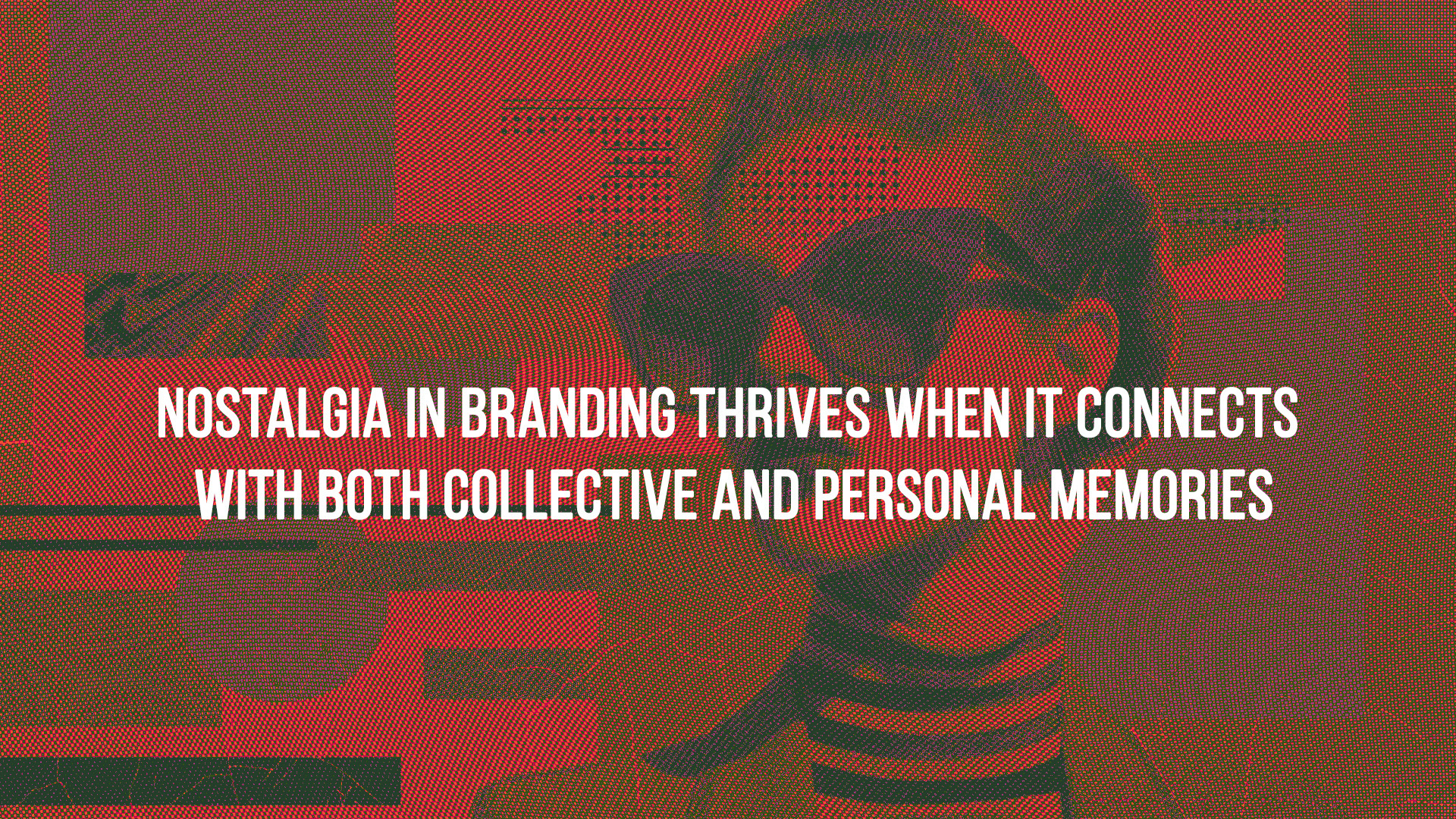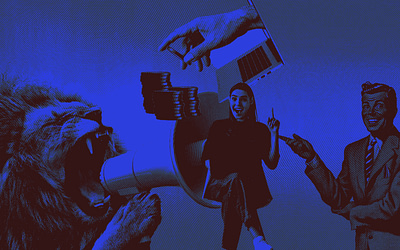Table of contents
Nostalgia taps into the human tendency to find comfort in familiar memories, creating an emotional bridge to the past. This phenomenon is deeply rooted in psychology, where the recollection of positive experiences triggers feelings of security, happiness, and warmth. Brands that evoke nostalgia leverage this emotional resonance, encouraging consumers to associate these positive feelings with their products or services.
In branding, nostalgia is not about recreating the past but reinterpreting it in ways that feel authentic and relatable. This strategy allows brands to build trust and loyalty by connecting with audiences on a personal level. Whether through retro packaging, old-school imagery, or familiar slogans, nostalgia fosters a sense of belonging and emotional depth that is difficult to replicate with modern strategies alone.
Why digital platforms amplify nostalgic feelings
Digital platforms have become powerful mediums for delivering nostalgia because of their unparalleled reach and ability to personalise content. Social media, in particular, provides brands with a space to share nostalgic campaigns that resonate across different demographics. Memorable visuals, throwback hashtags, and interactive features like polls can ignite collective memories and spark engagement.
The digital environment enhances nostalgic experiences through interactivity. Features such as augmented reality filters or virtual recreations of beloved products create an immersive connection to the past. These tools enable brands to blend nostalgia with modern technology, offering audiences a fresh yet familiar encounter that deepens emotional ties and boosts brand loyalty.
Nostalgia in Digital Branding: How it works
Successful nostalgic branding requires a seamless integration of past experiences into contemporary marketing strategies. Brands identify elements from their history or cultural moments that resonate with their target audience and incorporate these into their campaigns. This can include reimagining old product designs, reviving discontinued products, or referencing iconic moments that align with the brand’s identity.
The key lies in striking a balance between nostalgia and relevance. While tapping into the past, the presentation must feel fresh and relatable. For instance, a brand may use vintage-inspired visuals or typography while promoting modern values or innovations. This approach ensures the campaign appeals not only to those with direct memories of the past but also to younger audiences who find retro aesthetics appealing.
Tapping into collective and personal memories
Nostalgia in branding thrives when it connects with both collective and personal memories. Collective nostalgia recalls shared cultural experiences, such as iconic TV shows, music, or historical moments, which unite people across generations. Brands leveraging collective memories often use universally recognisable symbols or themes to evoke a sense of unity and belonging.
Personal nostalgia, on the other hand, targets individual experiences and emotions. Customised marketing campaigns, such as personalised emails or targeted social media ads, can evoke specific memories unique to the consumer. When brands strike this delicate balance between the universal and the personal, they create a compelling emotional connection that strengthens brand affinity and consumer loyalty.
Visuals: retro designs and familiar aesthetics
Visuals play a pivotal role in evoking nostalgia, as they are the first element consumers notice in a brand’s campaign. Retro designs, such as vintage logos, classic colour palettes, or typography inspired by bygone eras, immediately transport audiences to the past. These elements are carefully selected to strike a balance between old-school charm and modern-day appeal, ensuring relevance while sparking fond memories.
Brands often use visual cues from specific decades to connect with different audience groups. For instance, pixelated graphics might evoke 1980s arcade games for one demographic, while pastel tones and geometric designs could resonate with the 1990s aesthetic for another. Such tailored approaches make the nostalgic experience feel more personal and engaging for the target audience.
Audio: leveraging classic sounds and music
Sound is a powerful trigger for memory, making it a cornerstone of nostalgic branding. Iconic jingles, theme songs, or retro sound effects can instantly evoke memories of childhood or significant cultural moments. For example, reviving an old advertisement’s music or incorporating familiar audio tones can create a direct emotional connection with audiences.
Beyond music, brands can use specific sound effects associated with certain eras or activities. The click of a cassette tape, the chime of a classic video game, or the static of a vinyl record can evoke vivid memories. When carefully paired with visual and narrative elements, these audio triggers amplify the emotional depth of a campaign, making it more memorable and impactful.
The role of storytelling in nostalgic branding
Storytelling is a powerful tool in nostalgic branding, as it allows brands to weave emotional narratives that resonate deeply with their audience. By highlighting their own history or revisiting moments tied to their products or services, brands can establish authenticity and trust. These narratives often tap into shared experiences or milestones, creating a bridge between the brand’s legacy and its modern-day values.
For instance, a brand might recount its evolution over decades, showcasing how it has remained a part of its customers’ lives through changing times. By framing its story as a journey that parallels the audience’s own experiences, the brand becomes more relatable and cherished. This approach not only reinforces brand identity but also strengthens emotional connections with its audience.
Linking heritage and innovation
Nostalgic storytelling becomes even more effective when it pairs heritage with innovation. While revisiting the past, brands can showcase how they’ve evolved to stay relevant. This juxtaposition demonstrates that the brand values its roots while embracing the future. For example, a brand might reintroduce a popular product from decades ago with modern enhancements, marrying familiarity with novelty.
This strategy works because it celebrates continuity while appealing to the audience’s desire for progress. It sends a message that the brand understands its customers’ history and needs, creating a sense of loyalty. The combination of a trusted legacy with forward-thinking ideas positions the brand as timeless and dependable, making it a lasting part of consumers’ lives.
Future trends in nostalgic branding
As digital platforms continue to evolve, so will the ways brands incorporate nostalgia into their strategies. One emerging trend is the use of augmented reality (AR) and virtual reality (VR) to create immersive nostalgic experiences. For instance, brands may use AR to recreate retro environments or VR to transport users back to specific moments in history. These technologies allow for a more engaging and personalised connection to the past.
Another trend is the integration of AI to personalise nostalgic content. This personalised approach ensures that nostalgia remains relevant and meaningful across diverse audiences, increasing the emotional impact of branding efforts.
Adapting nostalgic strategies for Gen Z and beyond
Younger generations, particularly Gen Z, approach nostalgia differently than older demographics. While they may not have lived through the eras referenced in nostalgic campaigns, they often idealise these periods through the media and cultural artifacts they consume. Brands can tap into this retro fascination by blending past aesthetics with modern themes that align with Gen Z’s values, such as sustainability or inclusivity.
Additionally, Gen Z’s digital savviness calls for campaigns that are shareable and interactive. Creating nostalgic memes, short-form videos, or gamified experiences can engage this demographic more effectively. These strategies ensure that nostalgic branding remains relevant, bridging generational gaps and appealing to younger audiences in fresh and innovative ways.
Nostalgia has proven to be a powerful tool in branding, offering a unique way to forge emotional connections with audiences. This strategy works because it appeals to universal human emotions, creating a sense of belonging that modern campaigns often struggle to achieve. Nostalgia also bridges the gap between heritage and innovation, allowing brands to celebrate their history while remaining relevant in a rapidly changing digital landscape.
For brands looking to integrate nostalgia, the key lies in understanding their audience’s emotional triggers and blending these with modern marketing tactics. Whether through visuals, sounds, or storytelling, nostalgic branding invites audiences to reconnect with fond memories while embracing a brand’s contemporary vision. As digital platforms evolve, opportunities to innovate in nostalgic marketing will only expand, solidifying its role as a cornerstone of emotional branding strategies.
FAQs
How can small brands use nostalgia effectively?
Small brands can focus on local or niche cultural references that resonate strongly with their target audience. By highlighting shared experiences within a community, they can create a personal connection without requiring large-scale campaigns.
Does nostalgia work equally well across all age groups?
While nostalgia is universal, its effectiveness depends on the age group and the references used. Older demographics may prefer direct experiences from their past, while younger audiences often resonate with idealised or retro themes they associate with specific eras.
What are some pitfalls of nostalgic branding?
Over-reliance on nostalgia can make a brand seem outdated or irrelevant. Additionally, using references that are too obscure or disconnected from the audience’s experiences may fail to evoke the intended emotional response.
How do you measure the success of nostalgic campaigns?
The success of nostalgic campaigns can be measured through metrics such as engagement rates, brand sentiment analysis, and sales performance. Qualitative feedback, such as customer testimonials or social media interactions, also provides insight into the emotional impact of the campaign.
Can nostalgia blend with cutting-edge innovation?
Yes, nostalgia and innovation can complement each other effectively. For example, brands can use modern technology like AR or VR to recreate nostalgic experiences, combining the emotional pull of the past with the excitement of new technology.







